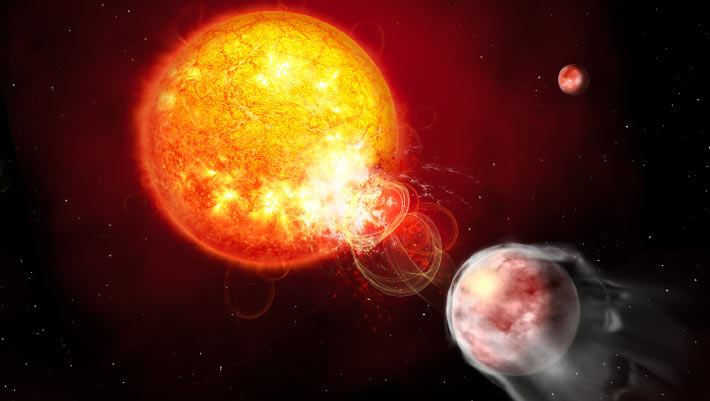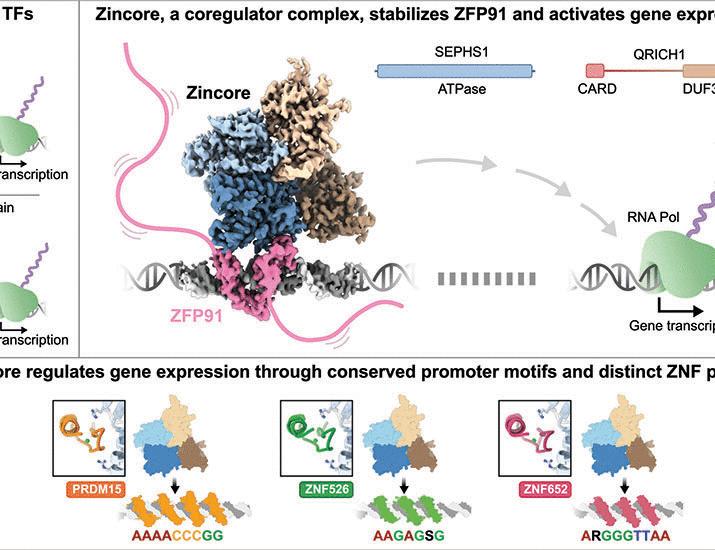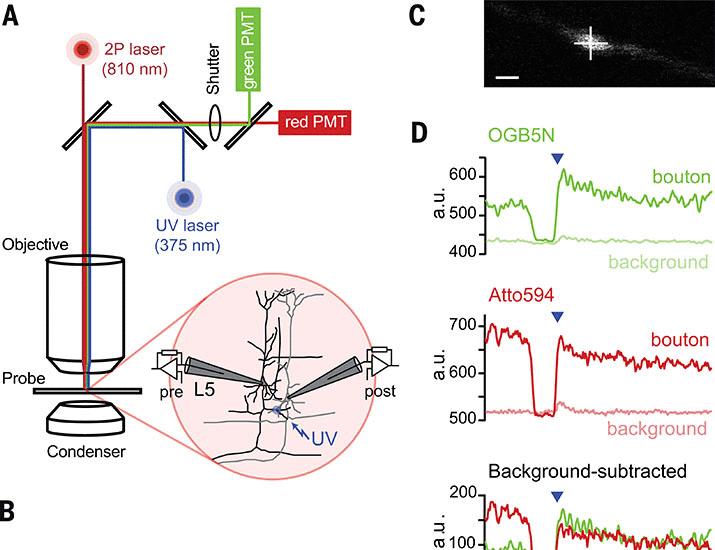The hot-Jupiter exoplanet HIP 67522b orbits its parent star, HIP 67522, so tightly that it appears to cause frequent flares from the star’s surface, heating and inflating the planet’s atmosphere, according an analysis of data from NASA’s Transiting Exoplanet Survey Satellite (TESS) and ESA’s CHaracterising ExoPlanets Telescope (CHEOPS).
HIP 67522 is a G0-type star located about 417 light-years away in the constellation of Centaurus.
Otherwise known as HD 120411, 2MASS J13500627-4050090 and TYC 7794-2268-1, the star is a member of the Scorpius-Centaurus stellar association.
HIP 67522 is approximately 17 million years old, and hosts two young exoplanets.
The inner planet, HIP 67522b, orbits the star once every 7 days and is about 10 times the diameter of Earth, or close to that of Jupiter.
Using five years of data from NASA’s TESS and ESA’s CHEOPS telescopes, ASTRON astronomer Ekaterina Ilin and her colleagues took a closer look at the HIP 67522 system.
They found that the planet and its host star form a powerful but likely a destructive bond.
In a manner not yet fully understood, the planet hooks into the star’s magnetic field, triggering flares on the star’s surface; the flares whiplash energy back to the planet.
Combined with other high-energy radiation from the star, the flare-induced heating appears to have increased the already steep inflation of the planet’s atmosphere.
This might well mean that the planet won’t stay in the Jupiter size-range for long.
One effect of being continually pummeled with intense radiation could be a loss of atmosphere over time.
In another 100 million years, that could shrink the planet to the status of a hot Neptune, or, with a more radical loss of atmosphere, even a sub-Neptune, a planet type smaller than Neptune that is common in our Galaxy but lacking in our Solar System.
“We’ve found the first clear evidence of flaring star-planet interaction, where a planet triggers energetic eruptions on its host star,” said Dr. Ilin, first author of a paper published in the journal Nature.
“What’s particularly exciting is that this interaction has persisted for at least three years, allowing us to study it in detail.”
“This type of star-planet interaction has been expected for a long time, but getting the observational evidence was only possible with this large space telescope dataset,” said Dr. Katja Poppenhäger, an astronomer at the Leibniz-Institut für Astrophysik Potsdam and the Universität Potsdam.
“The planet is essentially subjecting itself to an intense bombardment of radiation and particles from these induced flares,” said Dr. Harish Vedantham, an astronomer at ASTRON.
“This self-inflicted space weather likely causes the planet’s atmosphere to puff up and may dramatically accelerate the rate at which the planet is losing its atmosphere.”
In an accompanying paper in the journal Astronomy & Astrophysics, the astronomers confirm that HIP 67522 is a magnetically active star with strong radio wave emission powered by its magnetic field.
They observed the star at low radio frequencies for about 135 hours with the Australian Telescope Compact Array (ATCA), revealing it as a bright and bursty source of radio waves.
At the same time, they found no signs of radio wave flares that could be attributed to the interaction of the star with the planet.
“The non-detection is compatible with expectations that the planet-induced flares are too faint to be detected by ATCA, in line with the Nature paper’s conclusion of magnetic star-planet interaction driving flaring activity,” they said.
_____
Ekaterina Ilin et al. Close-in planet induces flares on its host star. Nature, published online July 2, 2025; doi: 10.1038/s41586-025-09236-z
Ekaterina Ilin et al. 2025. Searching for planet-induced radio signal from the young close-in planet host star HIP 67522. A&A, in press; doi: 10.1051/0004-6361/202554684

























